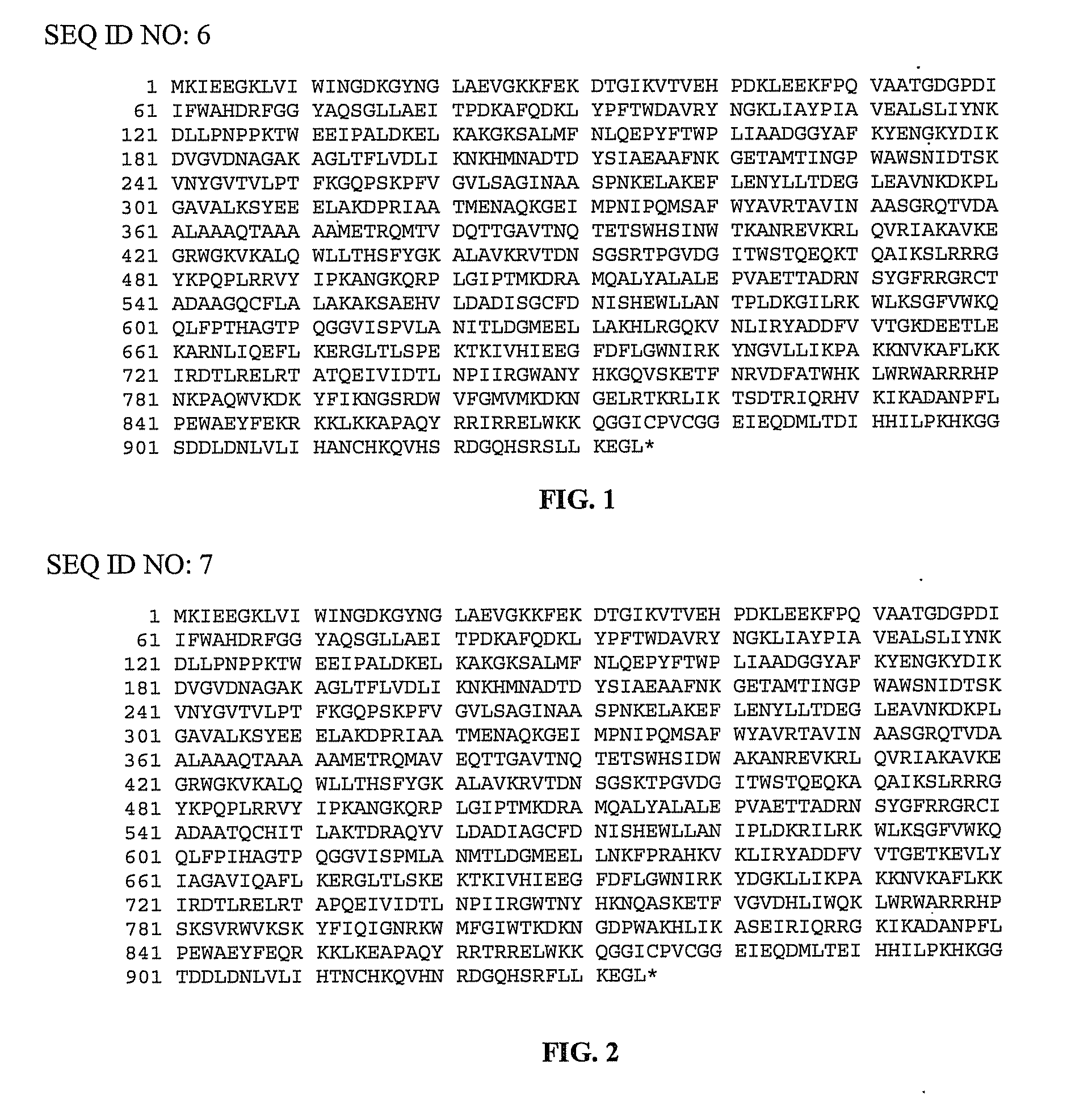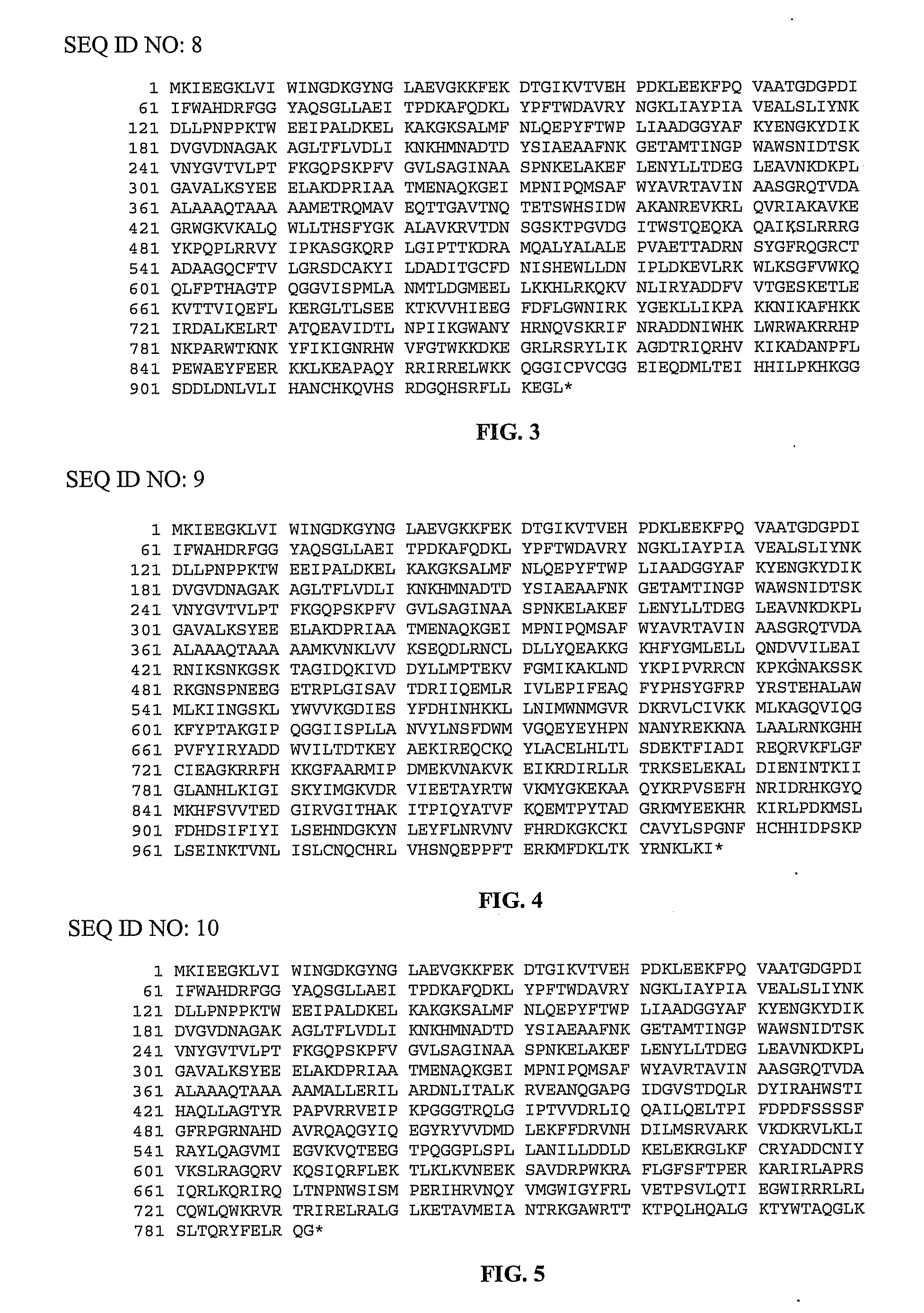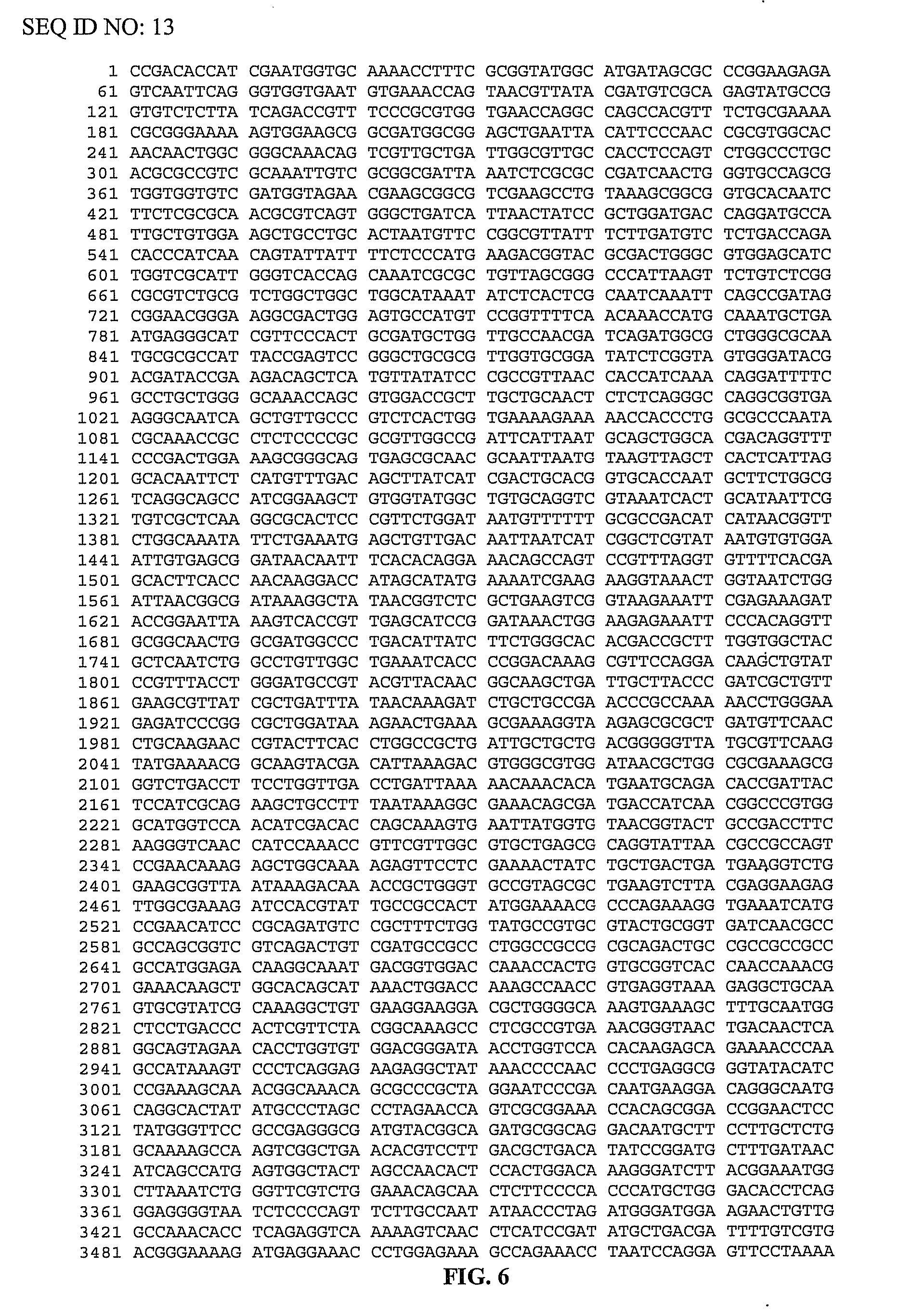Stabilized reverse transcriptase fusion proteins
a reverse transcriptase and protein technology, applied in the direction of transferases, peptides, enzymology, etc., can solve the problems of relatively low fidelity dna polymerization and undesirable addition of denaturing additives, and achieve substantial thermostable rt activity, substantial but reduced rt activity, and substantial rt activity.
- Summary
- Abstract
- Description
- Claims
- Application Information
AI Technical Summary
Benefits of technology
Problems solved by technology
Method used
Image
Examples
example 1
Recombinant Plasmids
[0100]pMalE-TeI4c, pMalE-TeI4f, pMalE-TeI4h* contain the RT ORF of the indicated mobile group II intron with a fused N-terminal MalE tag cloned behind the tac promoter in the expression vector pMal-c2t. The latter is a derivative of pMal-c2x (New England Biolabs, Ipswich Mass.) in which the factor Xa protease-cleavage site between MalE and the expressed protein was replaced by a TEV protease-cleavage site (Kristelly et al., Acta Crystallogr D Biol Crystallogr. 59, 1859-1862, 2003). The TeI4h* RT is a derivative of the native TeI4h RT with the YAGD motif in RT-5 changed to YADD. Recombinant plasmids containing group II introns from T. elongatus strain BP1 cloned in pET11 (TeI4f), pUC19 (TeI4c), or pACD2X (TeI4h*) were described previously. pMalE-RT plasmids were derived from these initial constructs by PCR amplifying the RT ORF with primers that append restriction sites, and then cloning the PCR products into the corresponding sites of pMal-c2t (TeI4c RT, EcoRI an...
example 2
Protein Purification
[0105]For expression of pMalE-RT or pMalE-RF-RT constructs, E. coli Rosetta 2 / pRARE (Novagen, EMD Biosciences, Gibbstown N.J.) or ScarabXpress / pRARE T7lac (Scarabgenomics, Madison Wis.) were transformed with the expression plasmid and grown at 37° C. in TB or LB medium to mid-log phase (O.D.600=0.8). Expression was induced either by adding isopropyl β-D-1-thiogalactopyranoside (IPTG; 1 mM final) to mid-log phase cells (pMalE-RF-TeI4c, TeI4f, TeI4h*, GsI1, and GsI2) or by growing cells in auto-induction medium (LB containing 0.2% lactose, 0.05% glucose, 0.5% glycerol, 24 mM (NH4)2SO4, 50 mM KH2PO4, 50 mM Na2HPO4) (pMalE-LtrA and pMalE-RF-LtrA). In either case, induction was for ˜24 h at 18-25° C., after which cells were pelleted by centrifugation, resuspended in buffer A (20 mM Tris-HCl, pH 7.5, 0.5 M KCl or NaCl, 1 mM EDTA, 1 mM dithiothreitol (DTT)), and frozen at −80° C.
[0106]For purification of MalE-RF-TeI4c, TeI4f, TeI4h* and their derivatives, the cell suspe...
example 3
Reverse Transcriptase Assays
[0109]RT activity at different temperatures was assayed by quantifying incorporation of 32P-dTTP using poly(rA) / oligo(dT)42 as the template-primer. The RT (50 nM MalE-RF-TeI4c RT or 100 nM of all other RTs) was pre-incubated with 100 nM poly(rA) / oligo(dT)42 in 1×RT buffer (75 mM KCl, 10 mM MgCl2, 20 mM Tris-HCl, pH 7.5, and 1 mM DTT) at different temperatures (ranging from 25-77° C.), and reactions were initiated by adding 5 μCi [α-32P]-dTTP (3,000 Ci / mmol; Perkin Elmer, Waltham Mass.). The reactions were incubated for times within the linear range and stopped by adding EDTA to a final concentration of 250 mM. Reaction products were spotted onto Whatman DE81 chromatography paper (10×7.5-cm sheets; GE Healthcare), washed 3 times in 0.3 M NaCl and 0.03 M sodium citrate, and scanned with a PhosphorImager (Typhoon Trio Variable Mode Imager; GE Healthcare) to quantify bound radioactivity.
[0110]Other RT assays used RNA templates with annealed DNA oligonucleotid...
PUM
| Property | Measurement | Unit |
|---|---|---|
| Temperature | aaaaa | aaaaa |
| Temperature | aaaaa | aaaaa |
| Fraction | aaaaa | aaaaa |
Abstract
Description
Claims
Application Information
 Login to View More
Login to View More - R&D
- Intellectual Property
- Life Sciences
- Materials
- Tech Scout
- Unparalleled Data Quality
- Higher Quality Content
- 60% Fewer Hallucinations
Browse by: Latest US Patents, China's latest patents, Technical Efficacy Thesaurus, Application Domain, Technology Topic, Popular Technical Reports.
© 2025 PatSnap. All rights reserved.Legal|Privacy policy|Modern Slavery Act Transparency Statement|Sitemap|About US| Contact US: help@patsnap.com



